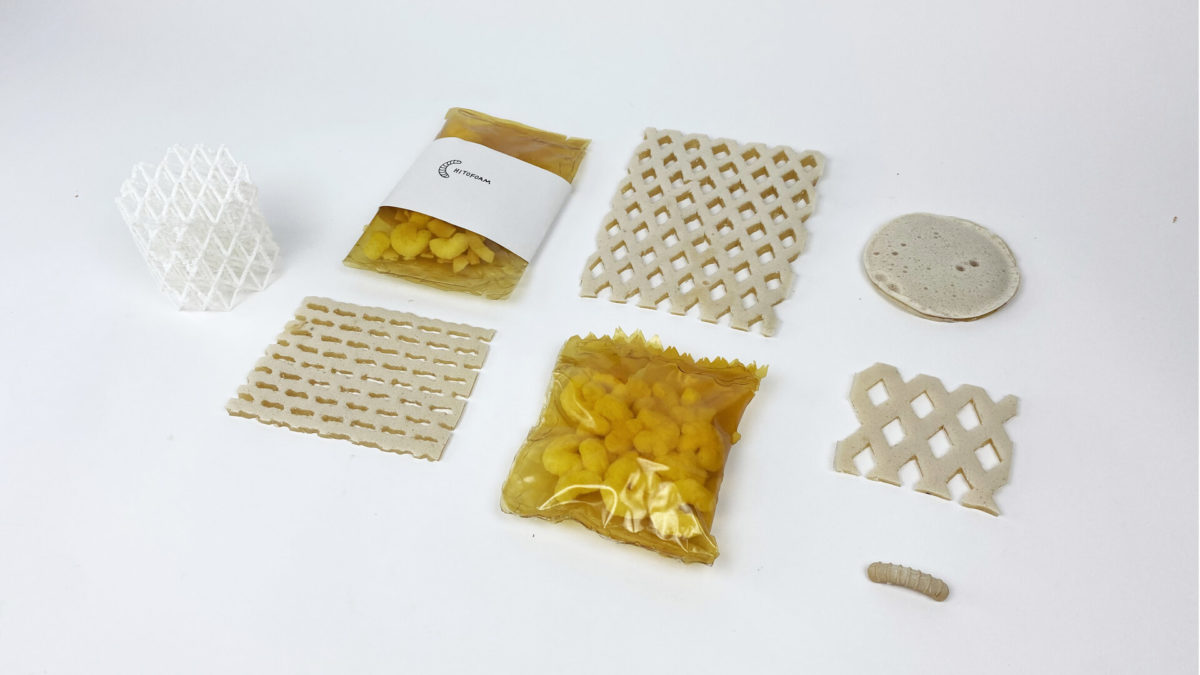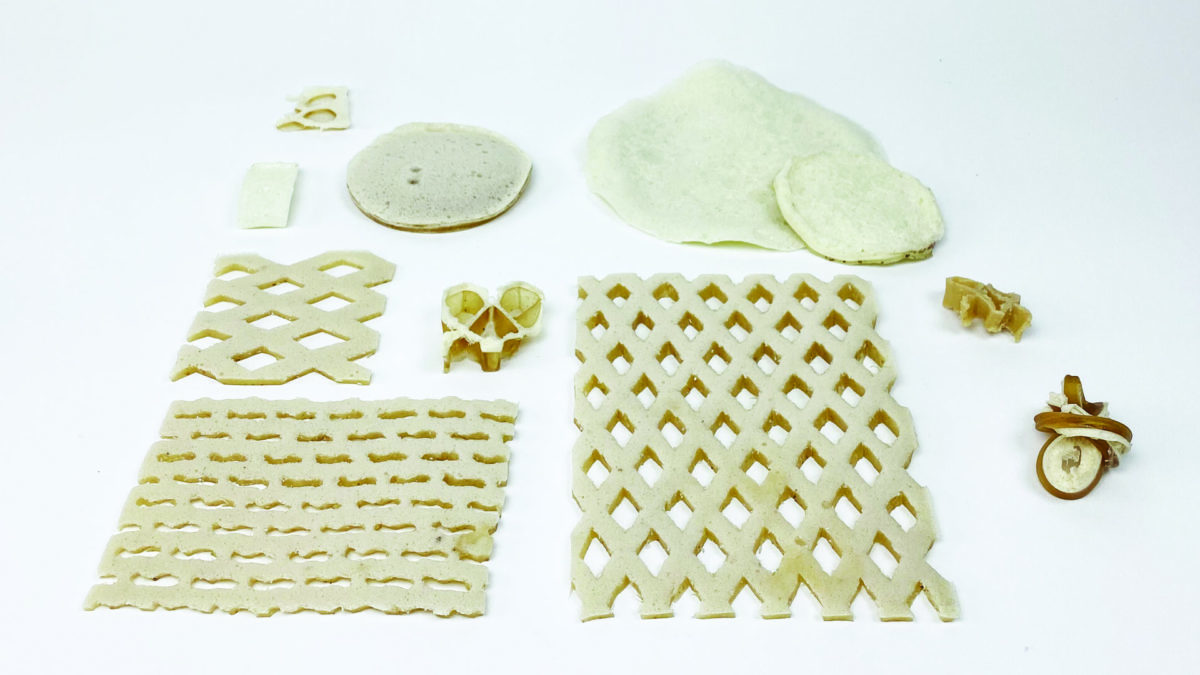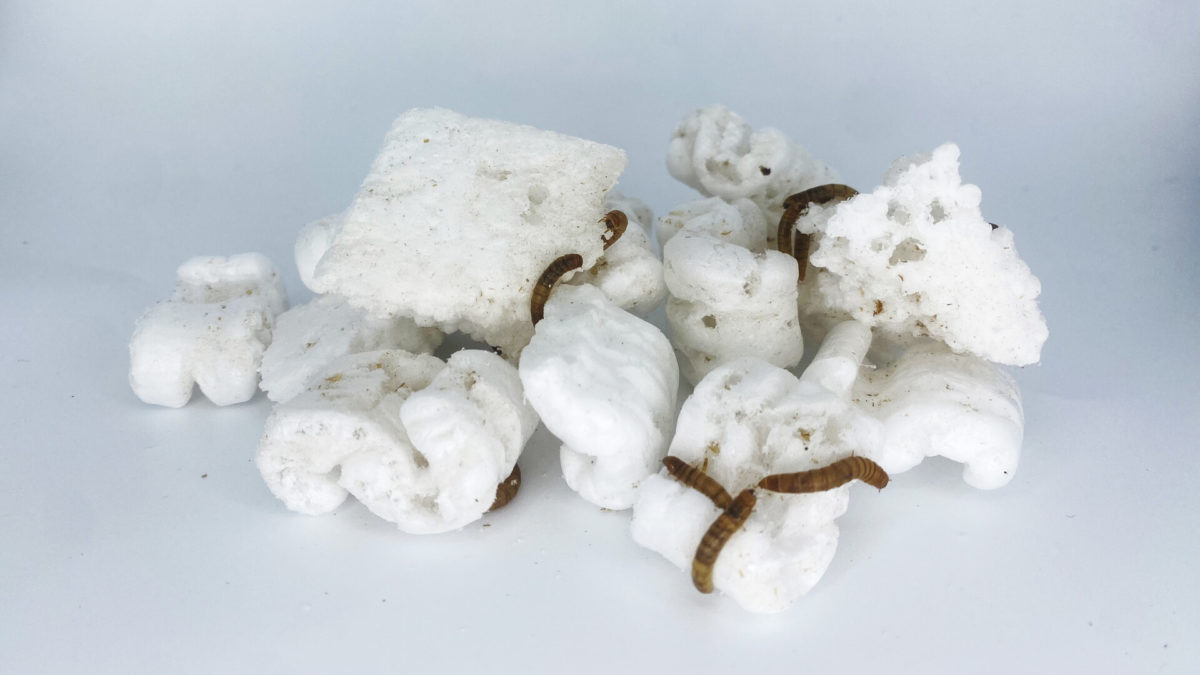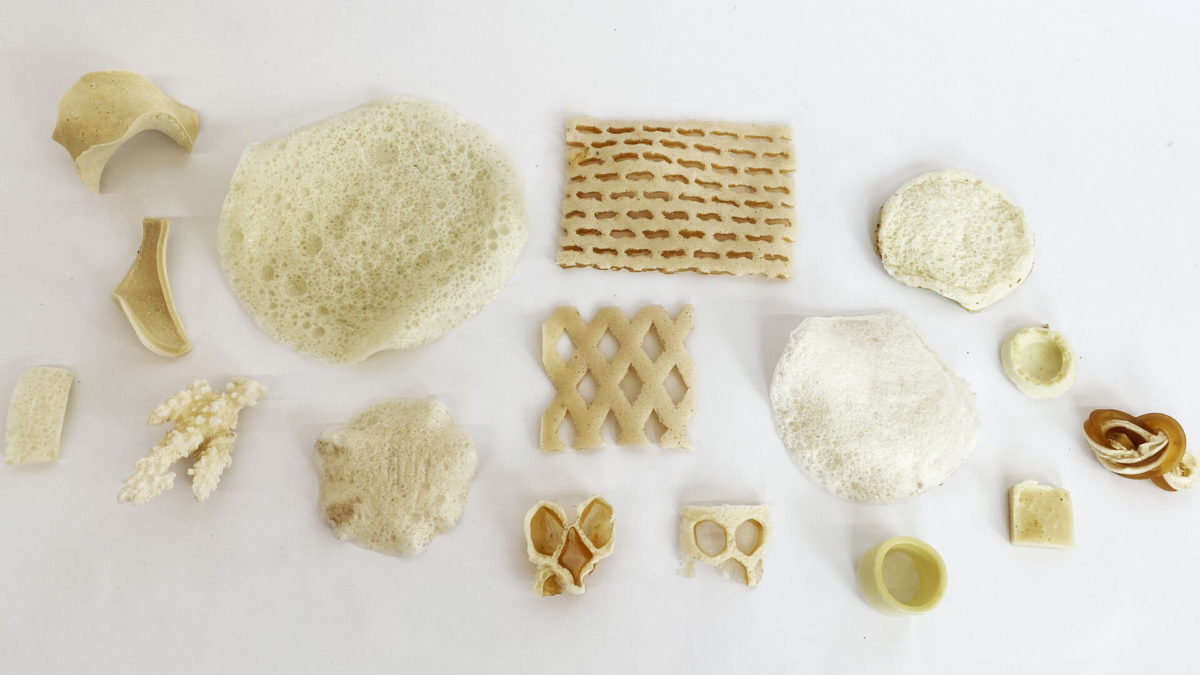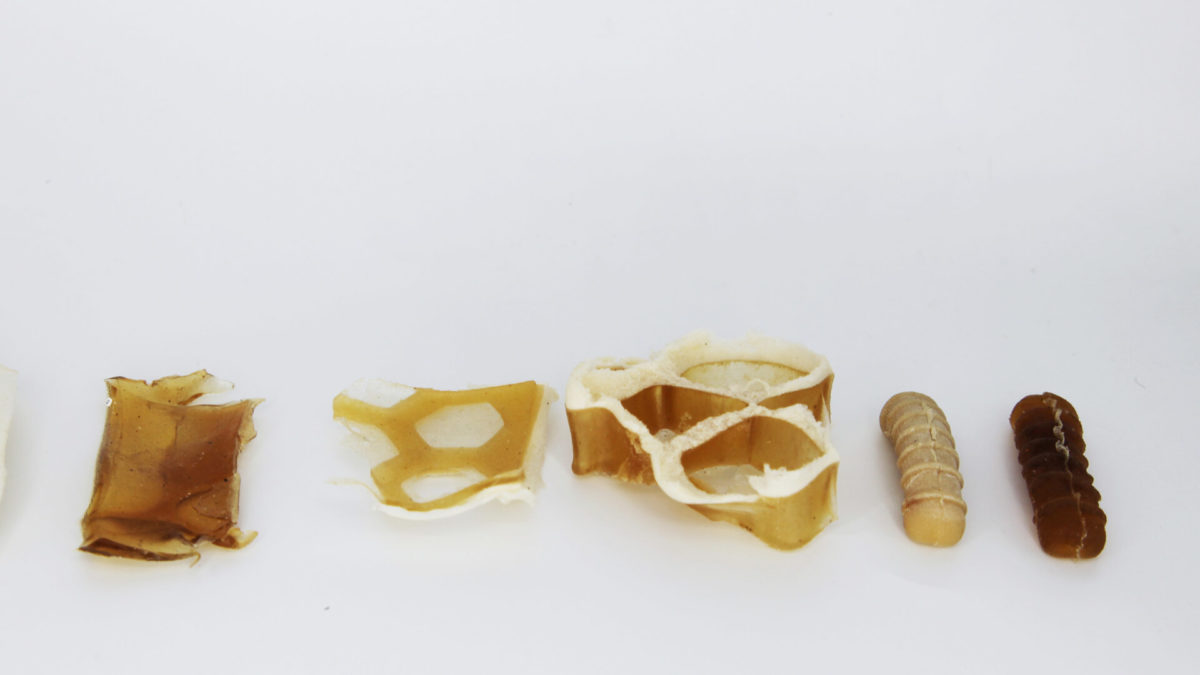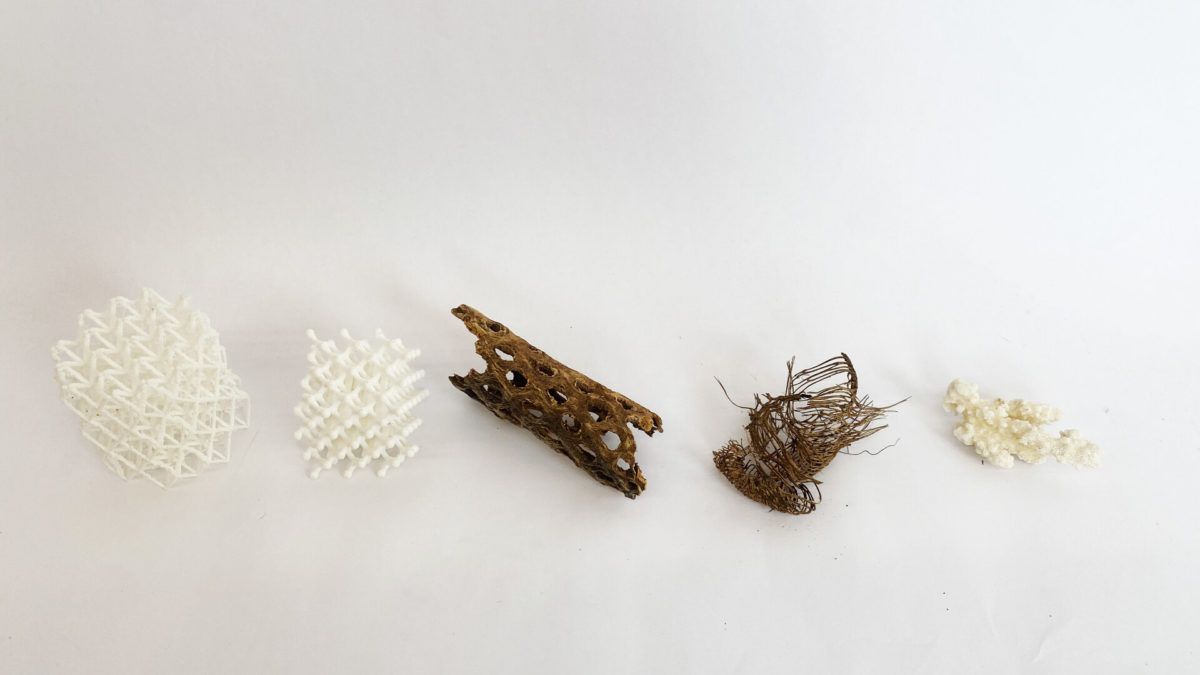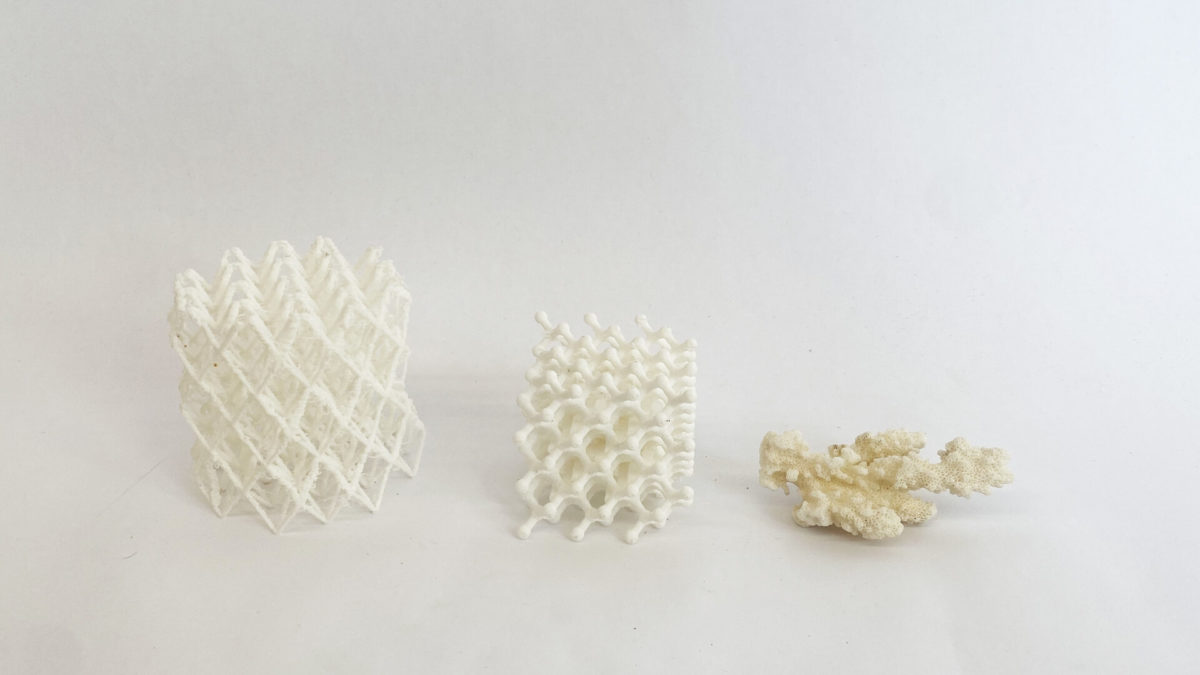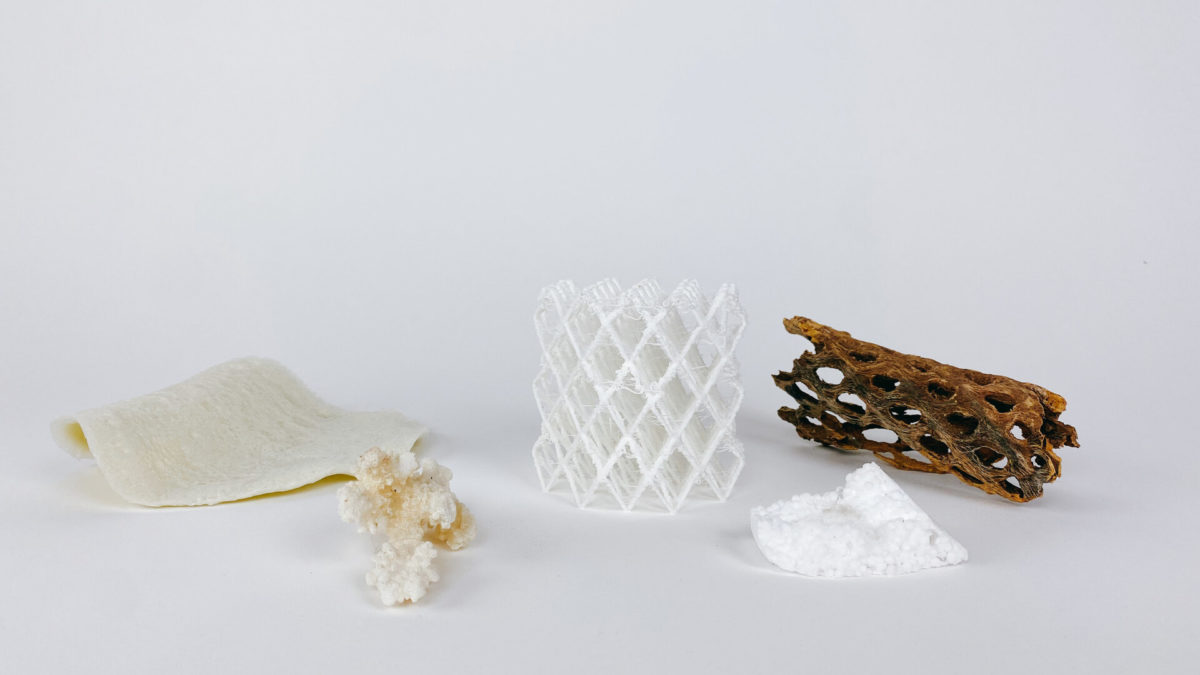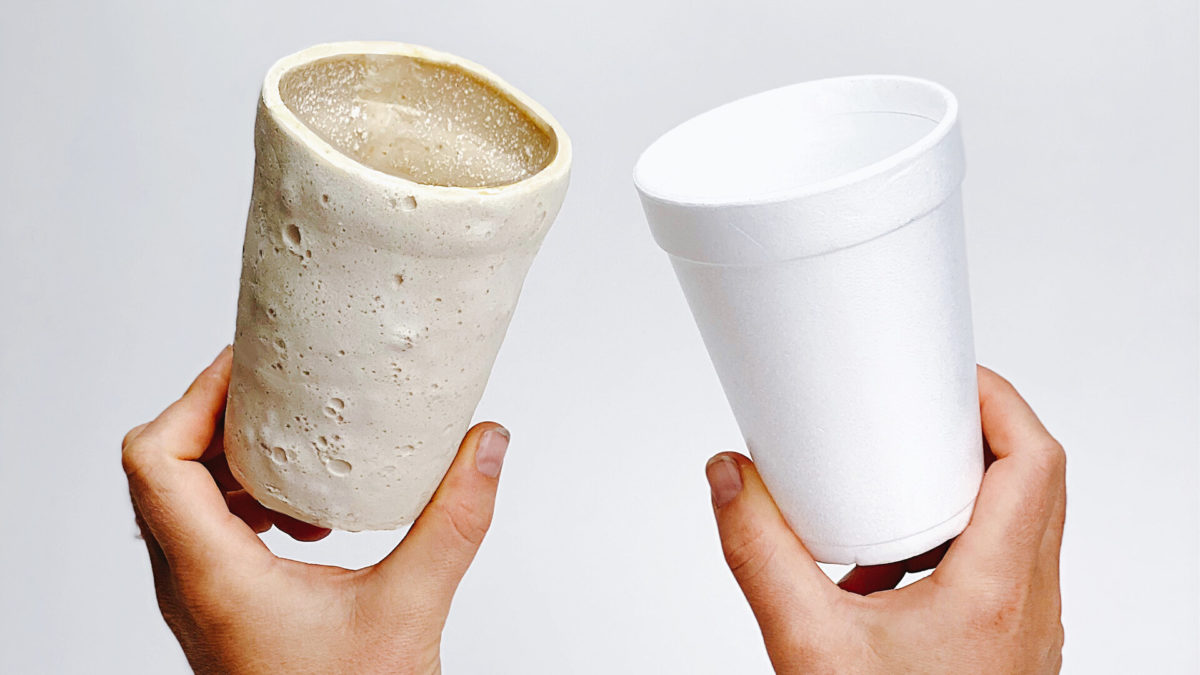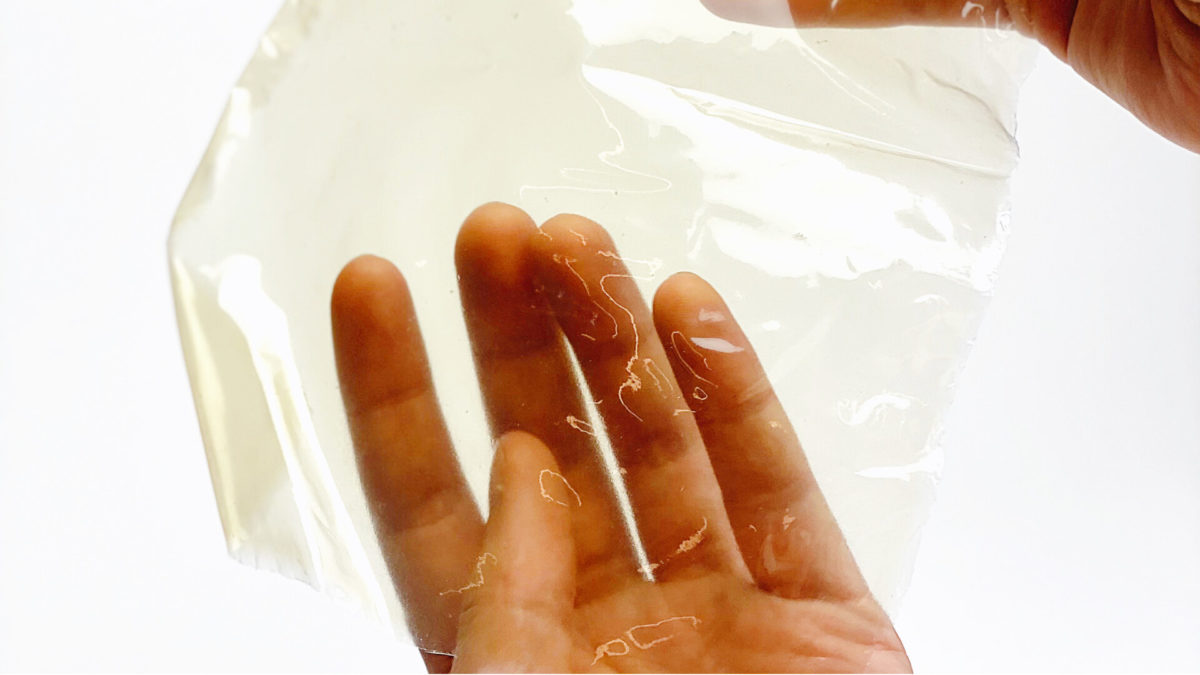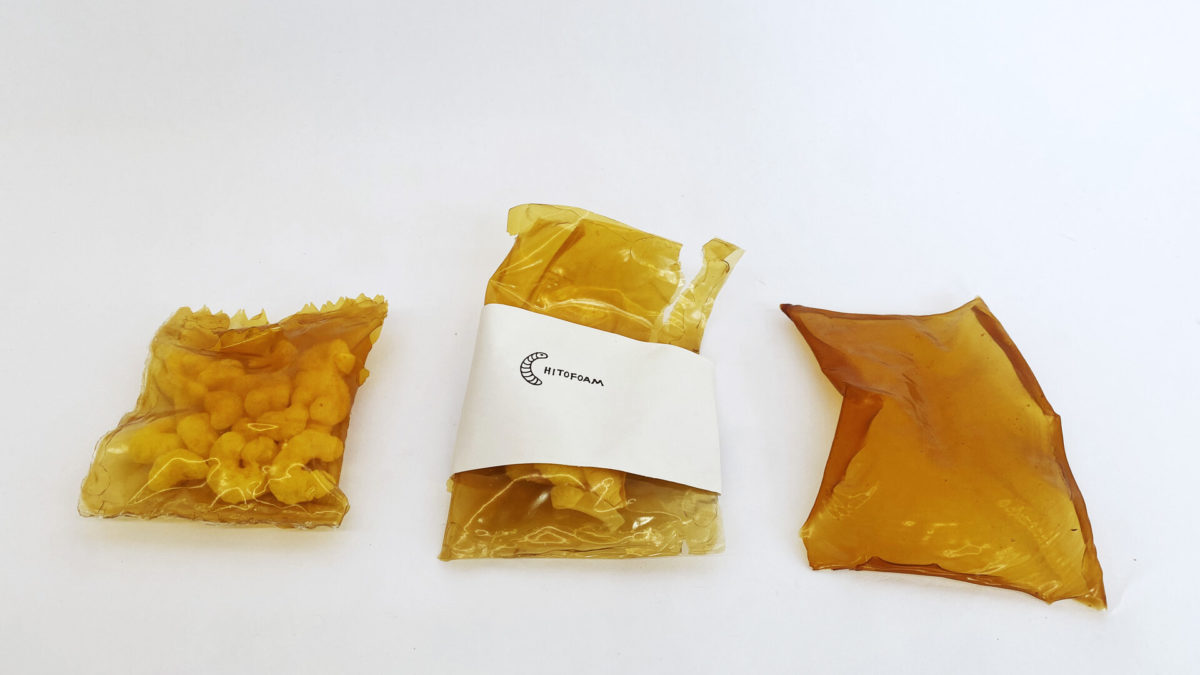
CHITOFOAM, a sustainable circular system
WeVux continues the exploration of new materials with the Chitofoam system, developed by Charlotte Böhning and Mary Lempres. The project offers a circular solution for Styrofoam waste management, with the help of insects!
Styrofoam isn’t biodegrade and instead just fractures into smaller and smaller bits, called microplastics. Just in the US, roughly 25 billion Styrofoam cups are thrown away every year. Each of these can take up to half a millenia to degrade. The impacts of polystyrene production and pollution are therefore manifold with far-reaching effects on the environment, labor conditions and human health factors. Nearly 30% of landfill waste is Styrofoam from packaging and insulation. This waste often ends up in developing nations and is mismanaged. Recycling is possible, but seldom actually practiced due to the process: expensive, difficult and without a real market.
In 2015, Stanford University researchers discovered that mealworms could safely digest, and thus biodegrade, Styrofoam. It was discovered that 100 mealworms could eat 40 milligrams of Styrofoam each day with no impact on their health or edibility. In their studio, the two designers began to dispose of their modelling foam and packaging waste in a homemade mealworm biodigestor for depolymerization. As material developers and designers, they began to collect the exoskeletons that the plastic-eating worms shed and extracted a biopolymer gel called Chitosan.
c
After further developments, they were able to create a lightweight, water-resistant, shock-absorbing and backyard-compostable packaging material, similar to Styrofoam. Currently, they’re in the process of improving Chitofoam by reimagining packaging and designing more efficient, lattice-structured forms for preserving and protecting products.
The project is one of the six finalists of the Lexus Design Award 2022 and the winner will be announced at the end of April. In fact, the designers did not limit themselves to creating a sustainable material, but a real circular system: Chitofarm wants to use mealworm farming as an environmentally-sustainable solution to malnutrition, particularly in developing rural economies. Growing edible mealworms is affordable, low-resource and space-efficient. The resultant food source is twice as protein efficient as beef, with zero methane emissions. For their proposal, Charlotte and Mary want to develop a mealworm protein product made from the plastic-eating mealworms and packaged in their backyard-compostable Chitofilm.
Waiting for the announcement of the Lexus Design Award 2022 winners, visit Charlotte Böhning’s and Mary Lempres’ pages to discover more about Chitofoam!
c

